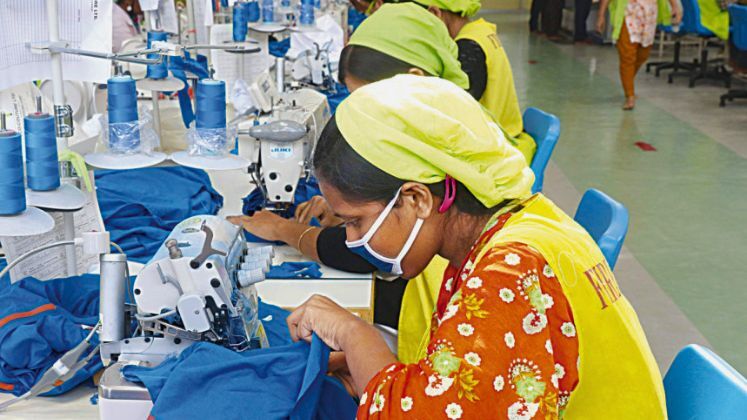
A recent study has found that automation has led to a significant decrease in the need for human labour in the garment sector, with the workforce reduced by nearly 31 per cent. The research, conducted by Solidaridad Network Asia, Bangladesh Labour Foundation, and BRAC University, highlights that sweater factories experienced the highest decline, with a reduction of 37 per cent per production line, while woven factories saw a decrease of 27 per cent.
The study, titled Assessment of Technological Transition in the Apparel Sector of Bangladesh and Its Impact on Workers, was unveiled at a program held at Amari Dhaka. It noted that automation in the cutting process accounted for the most substantial reduction, with a decrease of 48 per cent, followed by sewing, which saw a decline of 26.57 per cent.
Shahidur Rahman, a professor at BRAC University, emphasised that while automation brings certain benefits to workers, it also presents significant challenges, particularly for women and older workers who may have low literacy, limited skills, and lack confidence. He pointed out that while some workers have been trained to operate new machines or reassigned to different roles, this is predominantly seen in larger factories that can afford such changes.
Sultan Uddin Ahmed, chairman of the recently formed Labour Reform Commission, emphasised the need for strategic planning to adapt to the automation trend and remain competitive with other countries. He stressed the importance of retaining workers in the sector and preparing them to utilize their existing skills effectively.
Miran Ali, a member of the Bangladesh Garment Manufacturers and Exporters Association’s support committee, echoed the sentiment that the transition to automation should be gradual and coupled with efforts to enhance worker efficiency. He noted that external factors, such as power shortages and congestion in ports and roads, have hindered worker productivity, calling for compensation for workers affected by these inefficiencies.
AHM Shafiquzzaman, secretary to the Labour and Employment Ministry, underscored the inevitability of automation in the sector, warning that failure to embrace it could lead to detrimental effects on the country and the garment industry. He announced plans to establish an “Employment Department” to better manage labor market fluctuations.
As the garment sector navigates this technological shift, collaboration among entrepreneurs, government, and trade unions will be crucial in ensuring that the workforce is prepared and supported through these changes.






